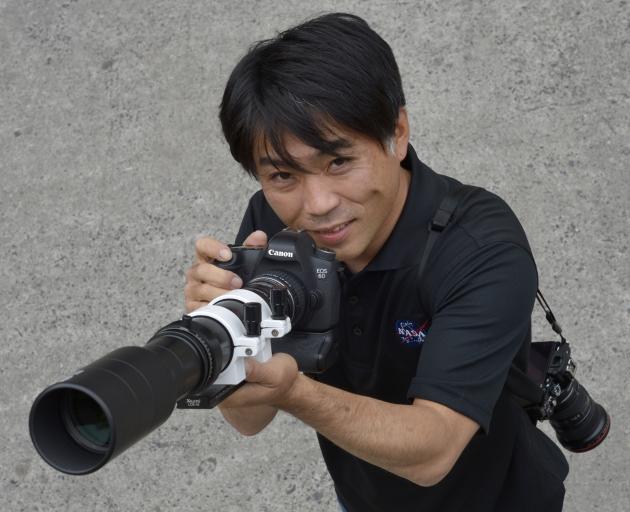
Mr Nakamura is one of the lucky 150 people who will fly on a chartered Boeing 767 from Dunedin Airport, to see the phenomenon in the skies south
of New Zealand.
The seven-hour flight will head as far south as 62deg, and take advantage of the equinox aurora effect, when there will be 12 hours of daylight and 12 hours of darkness.
The flight path will zigzag across the international dateline four times, so those on both sides of the aircraft will get a good view of the aurora.
The flight leaves Dunedin Airport about 9pm and returns at 4am or 5am tomorrow.

Mr Nakamura said he was very excited about the rare opportunity to see the Aurora Australis.
''But there's also a bit of a nervous feeling with it because it's a natural phenomenon and there's no promise we'll actually see an aurora.
''It depends on the night. You never know what's going to happen.
''It's a bit like going on a blind date.''
The University of Otago Information Technology Services information security officer is a keen photographer, particularly of auroras.
He has been snapping auroras from ground level in Dunedin for many years and has amassed a large collection of images.
He said the city was a spectacular place from which to take photos of auroras because it had such beautiful landscapes which complemented the night scene.
But he is relishing the thought of taking photos of the aurora tonight, because the flight will give him a much closer look at the phenomenon.
''We'll get to see the different features [types] - more than we would from ground level - features such as the aurora curtain, picket fence, proton arc and stable auroral red arc.''
Mr Nakamura said he would take several different makes and models of cameras with him, because each had a different sensor and lens, and each had different ''strengths and weaknesses'', depending on what type or strength of aurora appeared.
The flight is the initiative of Otago Museum director and former Nasa Space Telescope Science Institute public outreach head Ian Griffin, and will be the first of its kind in the southern hemisphere.
Tickets were priced at $3950 per pair of window seats in economy, and $8500 per pair in business class.












